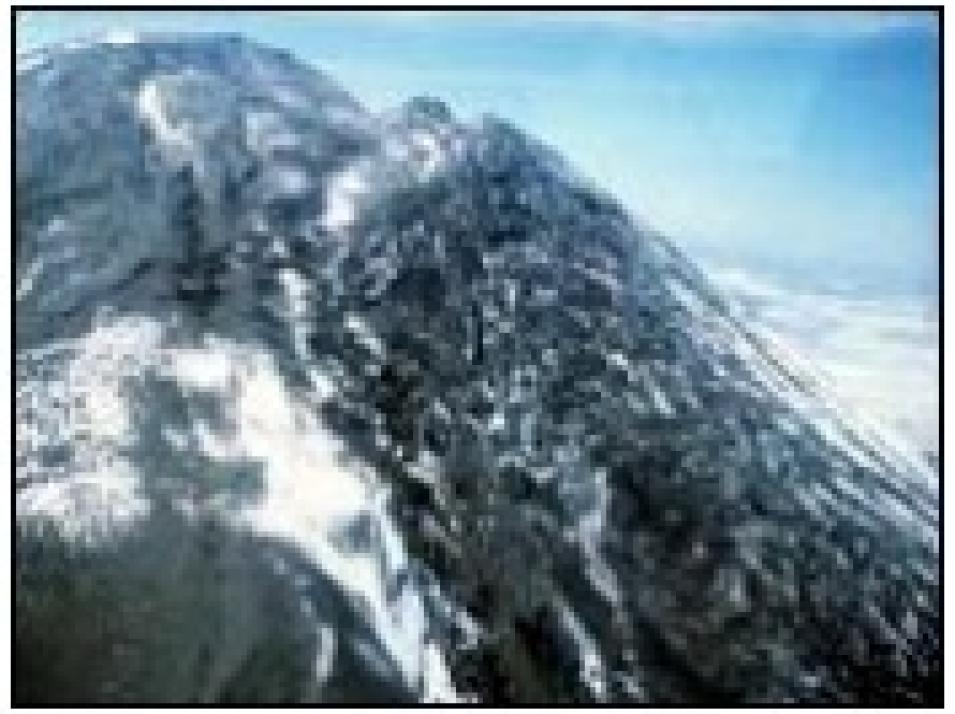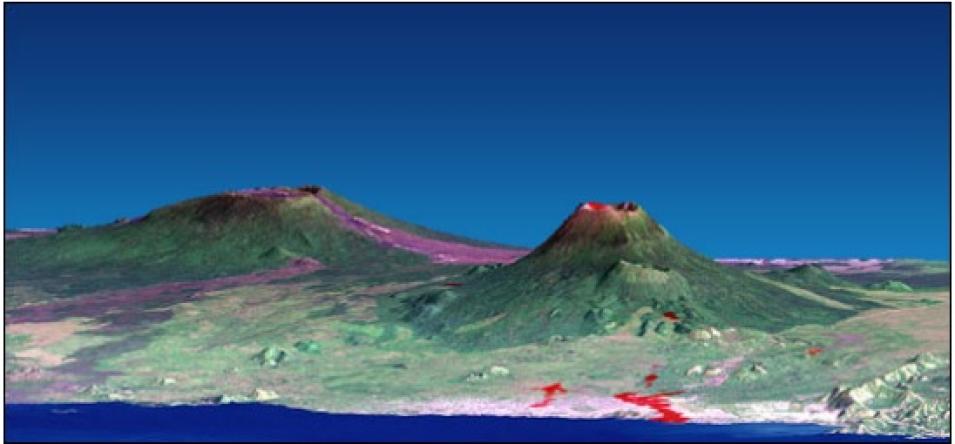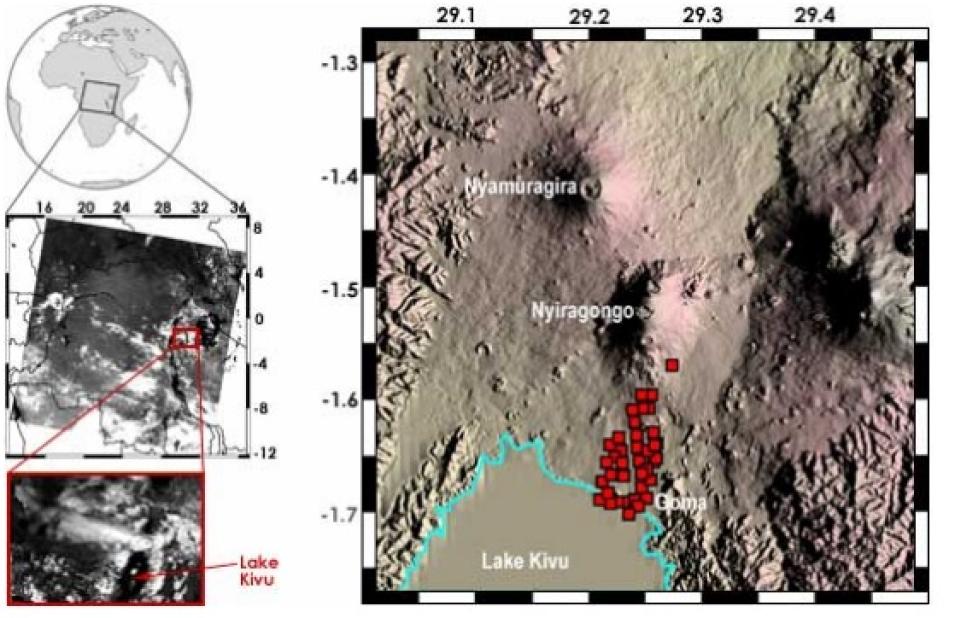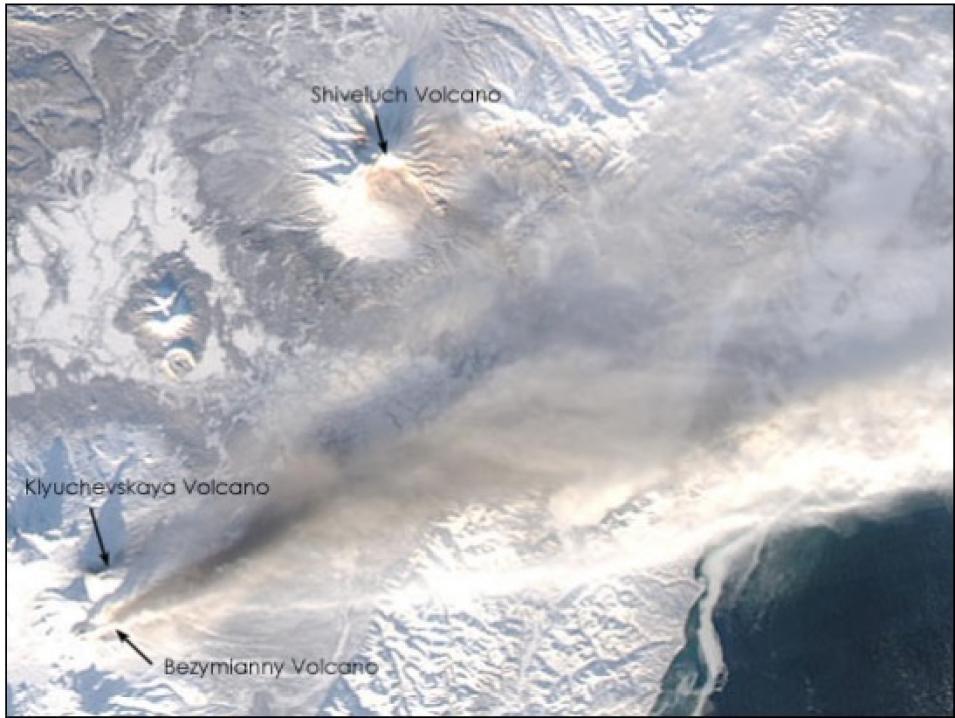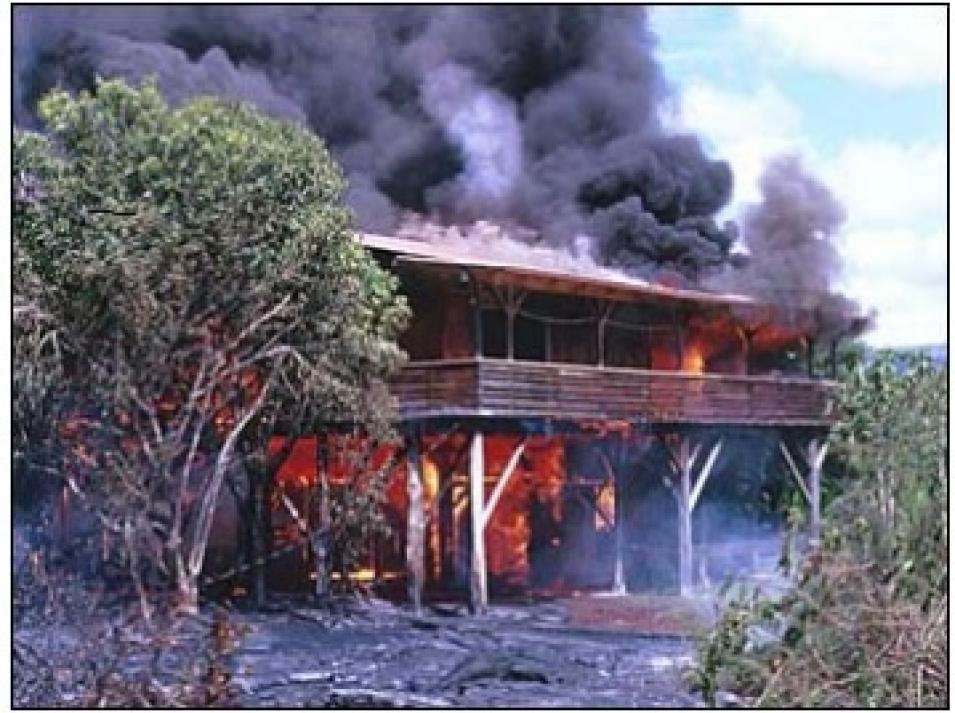In October 2001, a sleeping volcano in the remote South Sandwich Islands began spewing ash and lava from its summit. It was Mount Belinda’s first eruption in recorded history. Less than 24 hours after the eruption began, a research team based nearly 9,000 miles away at the University of Hawaii was already estimating how much energy was pouring out of the volcano.
That the researchers were making calculations so soon after the start of Mount Belinda’s eruption is remarkable, considering the volcano’s remote location. The South Sandwich Islands are situated between the southern tip of South America and mainland Antarctica, one of the most isolated areas of volcanic activity on Earth.
More than 1,500 potentially active volcanoes dot the Earth’s landscape, of which approximately 500 are active at any given time. Although scientists keep watch over many of the Earth’s volcanoes using traditional ground observation methods, satellite-based remote sensing is quickly becoming a crucial tool for understanding where, when, and why the Earth’s volcanoes periodically boil over.
Satellite technology now makes it possible to monitor volcanic activity in even the most isolated corners of the globe, and to routinely observe changes in the Earth’s surface that may signal an impending eruption. In addition, remote sensing data offer scientists the chance to prevent catastrophic damage to life and property by determining how and where volcanic debris spreads after an eruption.
“Hot Spots” Around the Globe
Just 10 years ago, Mount Belinda’s eruption might not have been detected for weeks or even months. “Normally, this remote volcano would have gone unmonitored,” said Rob Wright, research scientist at the Hawaii Institute of Geophysics and Planetology (HIGP). “However, when our system detected hot spots on Montagu Island, we decided to take a closer look. Inspection of high-resolution satellite imagery confirmed that the hot spots were indeed the result of volcanic activity.”
The “system” Wright refers to is the MODIS Thermal Alert System, known as MODVOLC, which now enables scientists to detect volcanic activity anywhere in the world within hours of its occurrence. MODVOLC uses data acquired by the Moderate Resolution Imaging Spectroradiometer (MODIS) sensors, which fly aboard NASA’s Terra and Aqua satellites. “The algorithm we’ve developed scans each 1-kilometer pixel within every MODIS image to see if it contains high-temperature heat sources, or hot spots. These heat sources may be active lava flows, lava domes, or lava lakes. Since MODIS achieves complete global coverage every 48 hours, this means that our system checks every square kilometer of the globe for volcanic activity once every two days,” said Wright.
For each hot spot identified, MODVOLC records the date and time at which it was observed, its geographic coordinates, the position of the satellite and the Sun, and the spectral radiance (the amount of energy emitted by the Earth’s surface at various wavelengths in the electromagnetic spectrum). Since active lava flows or growing lava domes emit vast amounts of energy, these hot spots are relatively easy to detect in MODIS imagery, even when they are smaller than MODIS’ 1-kilometer resolution. “The lava lake at Mount Erebus in Antarctica is only about 10 meters in diameter, but it’s clearly identifiable in MODIS images and, therefore, by our monitoring system,” said Wright.
One potential problem with a near-daily monitoring system like MODVOLC is the large volume of data generated. “If you want to study large regions at high temporal resolution, you’ll have to download a huge amount of MODIS data to get the job done,” said Wright. The problem was overcome, however, by operating MODVOLC via NASA’s Goddard Earth Sciences Data and Information Services Center (GES DISC). “Running the algorithm at GES DISC basically allows us to rapidly compress large amounts of image data into a handful of text files that include the details of only the pixels containing hot spots. As a result, we can monitor the entire globe in near-real time,” said Wright.
The information that MODVOLC records at GES DISC is then sent electronically to HIGP, located at the University of Hawaii on the island of Oahu, where the results are displayed on the system’s web site. “If you go to the web site, you can see all of the hot spots detected during the previous 24-hour period,” said Wright. “It takes about 8 hours from the time MODIS images the erupting volcano to the time the eruption is reported on the web site.”
The web site also allows users to click on any area of the globe and “zoom in” on individual eruptions or make comparisons between two erupting volcanoes. “You can compare, for example, the behavior of the lava dome at Soufriere Hills Volcano on the island of Montserrat with the behavior of the dome at Colima Volcano in Mexico,” said Wright.

